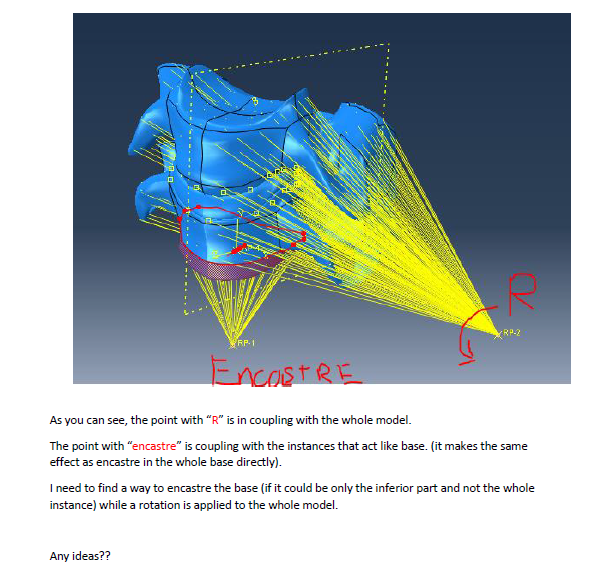OscarPacheco
Mechanical
- Nov 11, 2015
- 25
Good afternoon to all of you!
I am facing a problem that may be really easy but I can't find the clue.
I have a model of vertebrae C5 and C4 with the intervertebral disc between both.
I want to submit the whole model to a rotation. But I also want to encastre the base of the inferior vertebrae. My aim is to see the resultant moments.
I am using a coupling constraint between a reference point (situated outside the model) and the model itself. I use this reference point to rotate the whole model.
I am using encastre in the base of the vertebrae.
However abaqus exits with an error because nodes used in the coupling are also used in the encastre.
Does anyone know how to solve this problem?
Thank you very much. I really need help.
Please find attached a pdf with images.

I am facing a problem that may be really easy but I can't find the clue.
I have a model of vertebrae C5 and C4 with the intervertebral disc between both.
I want to submit the whole model to a rotation. But I also want to encastre the base of the inferior vertebrae. My aim is to see the resultant moments.
I am using a coupling constraint between a reference point (situated outside the model) and the model itself. I use this reference point to rotate the whole model.
I am using encastre in the base of the vertebrae.
However abaqus exits with an error because nodes used in the coupling are also used in the encastre.
Does anyone know how to solve this problem?
Thank you very much. I really need help.
Please find attached a pdf with images.

